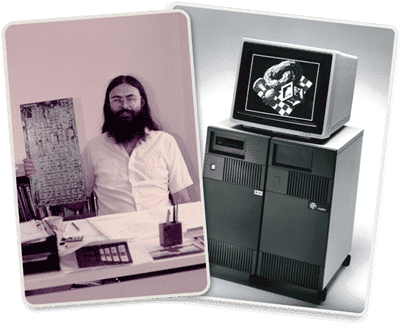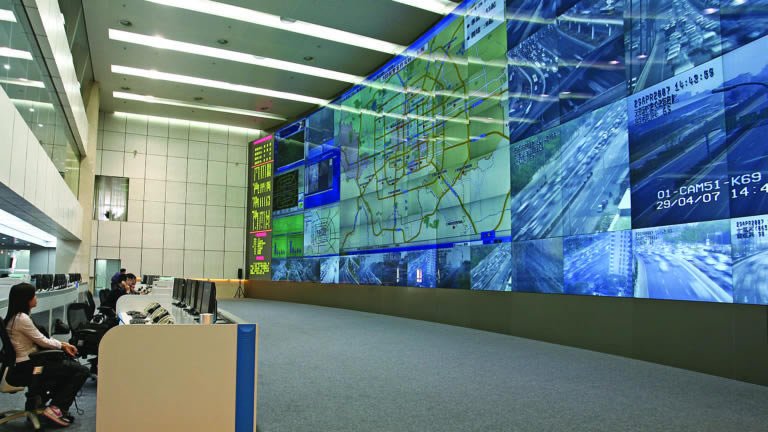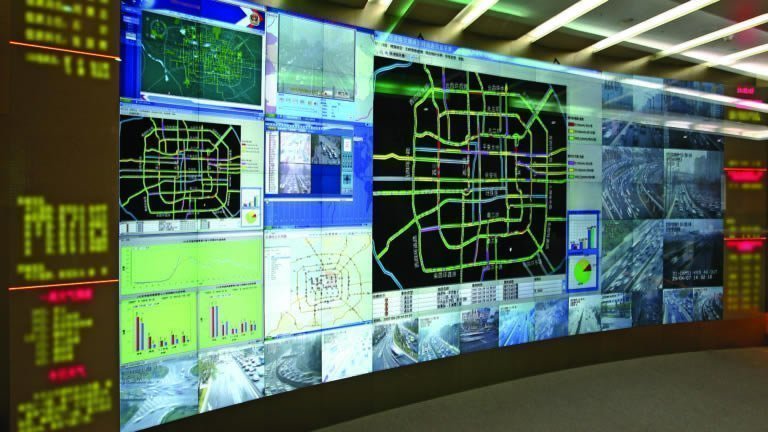When I worked at Extron, we would give practice design exercises to people. These exercises would force them to use certain products. In most cases, a few folks had to search through the catalog to pinpoint the right product. And they would inevitably comment something along the lines of “I never knew about the XX, I always use the YY product. I wish I had known about it before!”
Asking if there’s a different way to do things is an important question to ask in life frequently. The main reason for this is that we are all victims of the six most dangerous words in life, “We’ve always done it this way!” If we aren’t asking that question, then we are stagnant. And, in many cases, missing out on better ways to do things.
Even within companies, we tend to be bound to our perceptions of the products we build. When we make a new widget, it starts its life with a document that defines what it should do, where you will use it and how much it should cost, etc. This doc is called an MRD (Marketing Resource Document). It holds the guidelines of what this widget will be. So — we design the product, develop the marketing around it, etc. Then it is released to the world as a Widget 202xi. The final step is telling the users how to use it and where to use it.
I hate that last part!
Years ago at Extron, I spent a good chunk of my time telling folks about new products: what they were and how they could be used. In doing that, I largely eschewed the guidance given by the product management team (sorry, Dave and Joe). I did this because I wanted to focus on how it could be used and what tasks it could accomplish. I wanted to generally be as creative as possible while still being vague enough not to lock the product in some sort of application silo. Finally, I wanted to — as much as possible — ask the folks in the class how they felt it could be used.
So, we must take the time to look at products free of how the manufacturer tells us to, as they can live in their own silo based on past sales and what markets or applications they want to move into. As an example, look at how long it took for Extron to be considered a serious player in control systems or Crestron in large-video distribution. Both of these companies had great solutions available long before the industry viewed them as commonplace.
It takes a tremendous amount of effort, money, and time to convince people that they have a better solution for an area that part of their core competency. But here’s the thing, we can be ahead of that curve! If we work on seeking out other products, then we can define “new” solutions that our competitors have yet to figure out.
Even the most excellent product guru in the world suffered from a massive blind spot in what would become an intrinsic part of his biggest product and would change the world of personal electronics. Steve Jobs was 100% against the concept of the app store when the iPhone came out. I am sure it harkens back to the early days of the Mac, and his single-minded obsession with a closed system. The thought of allowing millions of people to build apps for his beloved phone… He fought ferociously against it. But over time, once he accepted it, things have never been the same.
I bring this up to cast a spotlight on a company that, while well-known in the industry, has been pigeonholed due to the perception of “Oh, it’s an XX company!” The company is Jupiter Systems. For those who are unfamiliar with them, they have been around since the early ’80s. Jupiter was founded in the San Francisco Bay Area by Eric Wogsberg and Jack Klingelhofer with a simple idea. (At least today, it seems simple. Back then, it was groundbreaking.) The idea was this: How about we build a system that allows for a computer to have TWO monitors? It was well-received, and as they were the only people doing this, it was a pretty popular product. Over time, customers kept coming to them wanting more monitors — three, four and so on. Over time this turned into what we know as video wall processors. Sadly, Eric passed a few years back; Jack is still there as the VP of engineering. Over the almost 40 years that Jupiter has been around, the company has been the heart of tens of thousands of systems worldwide that have allowed mission-critical operations to seamlessly function. Jupiter has always stood behind its products; the products are 100% designed, engineered and built in the U.S.

It remained an independent company until about four years ago when InFocus acquired it. (It was a deal that saw InFocus building up its product portfolio.) I think I can confidently state that many in the industry questioned the pairing. It seemed more of an odd couple than ideal marriage. However, as of a few months ago, Jupiter was spun out of InFocus and is now privately held. A good friend of mine, Sidney Rittenberg Jr. — who ran Prysm’s operations in Asia and has many years in the AV industry — is now CEO of the company. Justin Shong, who some of you might know recently from Whitlock or previously from Vidyo, is the new VP of worldwide sales and marketing. With their experience and networks, this can only be great for Jupiter. This is once again allowing Jupiter to focus on its core products. And with renewed investment, it is scaling up and will be growing its offerings. The coming years should be exciting. So while things have been a bit quieter over the last few years, it’s picking up the pace.

Historically, Jupiter has been known for products designed and engineered for large-scale mission-critical video wall infrastructure products, as well as the extremely demanding security requirements by many of the most secure entities in the world. And therein lies the rub. The company is known for large-scale video wall infrastructure applications. It is not known for conference rooms; it is not known for more distributed applications. This is a shame as the more you look into Jupiter’s entire product portfolio, the more you will see that it is indeed well suited for these other applications. As an end user, there were more than a few times when I asked why Jupiter wasn’t suggested for a given project; I was told that the company is only for big video walls, etc. It truly is a shame.
In a previous article, I looked at the difference between how an integrator defines a “good” conference room and how an end user defines the same thing. I found the primary difference is (and I am very broad here) that integrators are trying to build a room that covers as many use cases and possibilities as it can. This can (and does) result in overbuilt, overengineered rooms with too much equipment and complexity. This results in difficulty for users and challenges with uptime. Plus, should something break/go wrong, the repair time can be devastating.
A “good” room to an end user is as simple, repeatable and repairable as possible. The magic word, whenever possible, is also REDUNDANT! I need all the rooms to be the same and cover most use cases. If there are corner/edge cases where there might be issues, I will handle that on a case-by-case basis. And if a room goes down, it needs to be back up in under 24 hours — preferably under an hour!

So in that statement about what Jupiter does, while integrators may focus on “large video wall,” the end user focuses on “mission-critical!” Those two words will make an end user assume a few crucial things.
- Very long-lasting
- Hot-swappable
Manufacturer is used to doing a Root Cause Analysis (RCA) on failures, reporting those back and taking actions to fix them - Most importantly, a manufacturer that understands that if things go down — my business goes down
That last one is key, I have talked to many manufacturers that talked a good game, but when we had something go down, getting responses and product moving fast became challenging.
If you are now thinking, “hmm, maybe I need to go to the Jupiter website,” you will, of course, immediately be drawn to the flagship — the Fusion Catalyst. Rightly so, for Jupiter is known for this product and it’s a beast. It’s massive and comes with incredible features and functionality, resiliency, redundancy, and expensive and, honestly, big wow factor! Unfortunately, many folks stop there because let’s face it, there are not a ton of day-to-day applications for a monster like that.

When it comes to many mission-critical applications, especially ones with high security, etc., Jupiter is still the best name in that game. Its Catalyst family of offerings allows for scalability, reliability and redundancy that is second to none.
Once we move past those specialized applications and the requirements for things like a Catalyst system from Jupiter, we start to see where many people are missing out on powerful/flexible solutions. Not taking the time to start diving into Canvas, Pixelnet or some of the newer products that can change how you do things is the same as losing out on an opportunity to give your clients something they haven’t seen before. In many cases, you can offer your clients many features that you may not realize they are craving.
Without going into too much detail, Jupiter has three main product families that function alone, overlapped or all together — depending on the needs of a system. These offerings cover everything from the standalone wall processors that they have been traditionally known for, through to cutting edge solutions that take advantage of moving content over the existing network and can create virtual systems as large as you need them.
At the top of the heap, the Catalyst line is the traditional big wall processor. Jupiter offers the fusion product in conventional sizes and configurations, the Catalyst XL in sizes/functionality that nobody in the industry can match or just the Catalyst 4K, which is a smaller system for simpler applications that still require a robust product with physical connectivity.
A few years back, Jupiter introduced the Pixelnet product family and has continued to build on it. Essentially, Pixelnet is a decentralized video-wall processor that allows various input/output modules to be placed in different locations — and then interconnected. It uses standardized cabling to create a very flexible/resilient and redundant (if required) system to meet your needs. As one would expect of Jupiter, it has all the growth flexibility that you could want.
Up until now, the reality is that while these product families offer many possibilities, they are still kind of specialized to that NOC/SOC/Command and control world. Here is where it gets super interesting … the first product listed on the website is Canvas. When I looked on the site, I didn’t get it. Only after talking to Devon Wright (senior product manager) did the lightbulb go on — and boy, did it shine brighter the more he explained.
Canvas is a software application that can do one of three things (I am massively simplifying):
- Complete command/control/administration of the system
- Virtual input — make whatever device you are on (PC, MAC, iOS, Android) show up as a source on any screen in the system
- Virtual output — any device can be another video wall
While there isn’t time here to get into all the permutations this covers, it’s safe to say that this is massive! Of course, this is all built with the security you would expect, the granularity you need and the diagnostics you cannot live without.
You can essentially build an entire distributed system with no hardware, just through software. If you want a hybrid solution, all the other products are designed to work in tandem.
That means that you could have a catalyst and just control the on-screen display using an iPad with canvas running on it. Or you could have a Zoom Room that you install canvas on to bring sources to that system. You could allow your help desk to see what is going on with a particular machine if a user has an issue. You could even have a catalyst feeding a few big walls in an operations center and use canvas to feed all the operator desktops as inputs into the system. The possibilities are endless.

Editor’s note: This is not a sponsored post, and Christopher Gillespie does not work for Jupiter Systems, nor is he being paid by the company or otherwise have a direct conflict of interest. This column reflects his experience with the company in his past work as an end user and in the industry in general.
Source:
https://www.ravepubs.com/products-perceptions-jupiter-systems/
